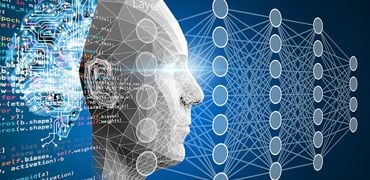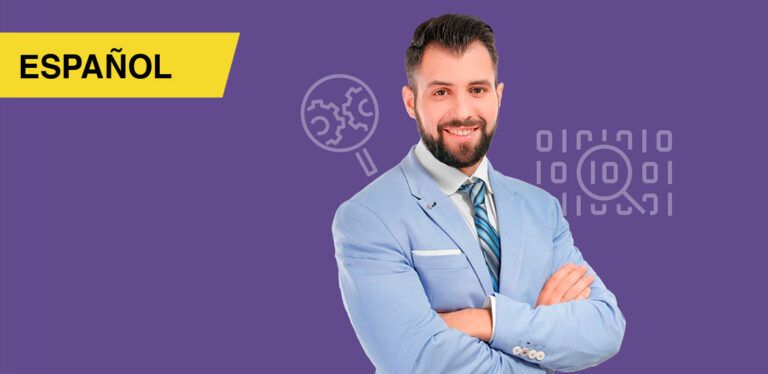What is SQL? What are its Applications and Benefits?

Everyone leveraged data from small-scale enterprises to Fortune 500 companies to ensure efficient operations. Frontrunners like the MAANG companies (Meta, Amazon, Apple, Netflix, and Google), have vast databases that hold a wide range of customer data. Here is where database management systems like MS Access come in, and a programming language known as Structured Query Language (SQL) is used to engage with this data. This specialized programming language has been around for nearly half a century and is widely used to extract data. But what is SQL? Why is it a foundational tool for data professionals around the world? Let’s find out.
What is SQL?
SQL is a declarative programming language designed to store, retrieve, manage or manipulate data within a Relational Database Management System. Since databases can hold as much or as little information as required, having a fuss-free data analysis system is an absolute must. It functions as the language of databases that allows you to turn unstructured data into useful information.
If you are a data professional such as a data analyst, data scientist, or back-end developer or work in a field that is even remotely data-driven, you need to have a good understanding of what SQL is. In addition, since multiple companies increasingly rely on big data analytics, it has become an in-demand skill.
A Brief History of SQL
-
- 1970: Dr. Edgard Codd publishes a research paper on the relational data model for large shared data banks.
- 1973: IBM researchers Donald Chamberlain and Raymond Boyce begin developing the language, which was then called Structured English Query Language (SEQUEL).
- 1974: Both Chamberlain and Boyce develop a SQL-based relational database management system called Relational Software Inc, inspired by Codd’s research paper.
- 1979: IBM releases the first commercially available SQL data system.
- 1986: It is standardized by the American National Standards Institute (ANSI).
What are the Uses of SQL?
Now that we know what is SQL and have understood its evolution, let’s understand its uses. Structured query language finds applications across a diverse range of industries that mainly cater to database-related tasks. For instance, a data analyst would use it to query data tables and derive accurate insights. On the other hand, a data scientist would load data into their models using this programming langauge.
A Few Database Operations Include:
- Controlling information stored in a database
- Extracting and evaluating data
- Modifying database structure
- Inserting, updating, or deleting existing data from a database
- Defining and creating tables
- Creating views to secure table access
- Modifying indexes within a table
- Setting permissions or access control for enhanced data security
SQL command categories like Data Control Language (DCL), Data Manipulation Language (DML), and Data Definition Language (DDL) are used for data administration and development. Once you learn more about what it is, you will find that many different versions, like MySQL, enable SQL functions to manage back-end data across various web applications.
An SQL certificate course or an online coding bootcamp is a great way to learn what is SQL and upgrade your knowledge.
What are Some Commonly Used SQL Commands?
SQL commands are a set of instructions used to communicate with the database. These commands are integral for smooth data operations and perform various tasks, queries, and functions. They streamline functions like creating and altering tables, retrieving data, modifying the database, and so on.
Here are some basic SQL commands that programmers most frequently use:
- CREATE – Creates a table, object, or view in the database
- ALTER TABLE – Allows for a change in the structure of a table
- INSERT – Adds new data into the database
- COUNT – Provides a total count of the number of rows
- SELECT – Extracts data from specific rows or columns
- CHECK – Restricts the value range in a column
- DROP – Removes tables and databases
- GROUP BY – Combines rows and aggregate data
- UPDATE – Makes amends to the data
- DELETE – Deletes tables or data
It is important to note that if you are targeting a complicated database, you may likely have to use a combination of SQL queries and commands to structure your data effectively. So, if you are still undecided on which coding program to learn, let us take you through a range of benefits that make SQL a great learning choice.
What are the Benefits of SQL?
SQL’s simple syntax and ease of use have long cemented it as a popular choice for database programming over the years. Here’s why SQL is a class apart from other programming languages.
#1: It is a portable language
SQL is easily accessible and can be used on servers, personal computers, laptops, and some mobile phones. In addition, its portability feature makes it a preferred choice among users.
#2: It does not require coding skills
Unlike other programming languages, SQL does not require you to have coding skills. Instead, this user-friendly language functions on SQL commands that use simple keywords like ‘create’ and ‘update.’
#3: It enables rapid query processing
SQL processes such as retrieving, manipulating, or deleting data are efficient, irrespective of high data volume. It accounts for quick data transfer between users while maintaining data accuracy.
#4: It is highly accessible
SQL is compatible with most databases like Microsoft Access, MySQL, and others. Furthermore, since most relational database management systems support SQL functions, one can use them to develop application extensions that cater to procedural programming.
In conclusion, SQL is a relatively simple yet powerful programming language that finds applications across various industries. Moreover, it can also be integrated with other languages like Python, Hoola, and Scala, broadening the scope of its application in data sciences.
Frequently Asked Questions
#1: Are Python and SQL the same?
SQL is a query language that is used to access and extract data from a database. Python is a general-purpose programming language that facilitates data experimentation.
#2: Is SQL a coding language?
It is not a coding language but a fourth-generation programming language that is used to communicate with relational databases.
#3: Is SQL easy to learn?
It is one of the easiest languages to learn, given its simple syntax, user-friendly interface, and name-dependent functions.
#4: Is SQL a relational database?
SQL is a relational database. It stores data and provides access to interlinked data points.
#5: How do I write an SQL query?
A simple SQL query would begin with a select statement, followed by the field names you want to display and the selection criteria.
#6: What are the differences between SQL and MySQL?
One is a language, while the other is database software. SQL is the programming language to query a database. MySQL is an open-source database product that enables users to keep this data organized.
Working knowledge of SQL is imperative to advance your career in a data-driven culture. To help you upgrade your SQL skills, Emeritus offers a diverse range of online data science and analytics courses by top global universities and a professional certificate course in data engineering, among many other accredited programs. So get ready to embark on a rewarding career path today!
By Neha Menon
Write to us at content@emeritus.org











































